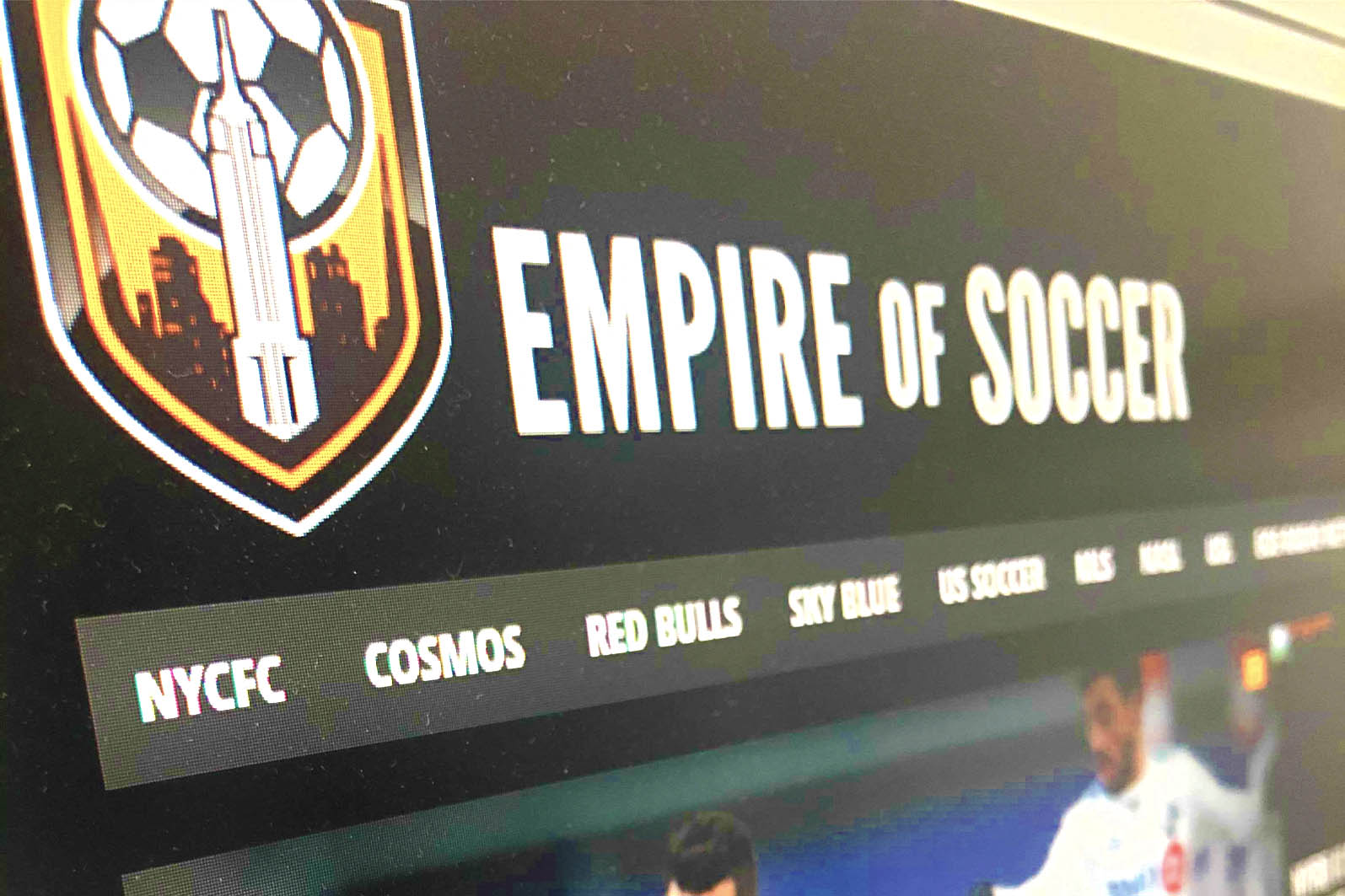For the second year in a row, Major League Soccer has achieved its highest ever average attendance. At 340 games this season, the average crowd was 21,550, significantly higher than last year’s mark of 19,149. Chivas USA, which was an anchor on recent years’ averages, is no more, and two expansion teams both outperformed expectations. In addition, Toronto and San Jose played in larger venues than they did a year before. Even setting those facts aside, nine of the remaining 16 teams improved their attendance from 2014.
Seattle Sounders – 44,247
The Sounders have done it again. While they opened up the upper deck fewer times this year, expanded capacity for the majority of their games allowed them to set another new MLS attendance record. This season’s average comes in just above the record Seattle set in 2013. In North American soccer history, only the 1978 and 1979 New York Cosmos averaged more fans per game.
Orlando City SC – 32,851
They may have missed the playoffs, but Orlando City exceeded all expectations off the field. Consider that after selling out the Citrus Bowl for their first game, team management planned to limit the capacity to 19,500 for the remainder of the season. Instead, their smallest crowd of the year was more than 22,000 on a rainy September night. The team has been forced to revamp its stadium plans to build 6,000 more seats than originally envisioned. For good measure, 32,851 marks a record average for an expansion team in MLS, beating Seattle’s 2009 mark.
New York City FC – 29,016
When it comes to selling tickets, there’s nothing quite like that new team smell. If not for Orlando’s figures, we’d be making more of the attendance figures NYCFC put up in their inaugural season. If nothing else, NYCFC’s drawing power has suggested that the league was right in its belief that there existed room for a second team in New York. Now it must focus on finding room for a stadium.
Toronto FC – 23,451
The expanded BMO Field was rarely full, but TFC still managed the fourth-best attendance in the league. The Reds had multiple home games soured by poor weather, and since BMO won’t be getting a roof until next year, that had a negative impact on their average. Even so, the expanded capacity allowed the club to achieve its best average in its nine-year history.
LA Galaxy – 23,392
Despite a season of setbacks on the field, the Galaxy’s big spending paid off at the box office. They sold out every home game after the arrival of Steven Gerrard, and finished the season with their highest average attendance since 2008. Giovani Dos Santos couldn’t have hurt either.
Portland Timbers – 21,144
Once again, the Timbers sold out every game this year, and the couple extra seats squeezed into Providence Park meant that they drew slightly more fans per game than last year. Their waiting list for season tickets remains the longest in MLS, and a playoff season is unlikely to change that.
San Jose Earthquakes – 20,979
New digs allowed San Jose to smash their previous club (including the NASL Earthquakes) record for attendance. The Quakes sold out every game at Avaya Stadium this season, and games at Stanford and Levi’s Stadium brought their overall attendance up near 21,000 per game. The move from tiny Buck Shaw Stadium saw their attendance jump by over 6,000 fans per game, by far the biggest increase in MLS.
Houston Dynamo – 20,658
You wouldn’t know it by the bright orange empty seats that plague Dynamo broadcasts, but the team is reporting the sixth best attendance in MLS this year. Though Cubo Torres rarely saw the field, Houston saw a significant bump in attendance compared to the last two seasons. A second straight year without the playoffs might make things harder in 2016.
Vancouver Whitecaps – 20,508
A strong season on the field benefited the Whitecaps with their best attendance in five MLS seasons. They still aren’t at the point where BC Place is filled for midweek matches, but Vancouver sold out 11 of their 17 regular season home games. There is room to expand if Whitecaps fans can provide the demand; perhaps the playoffs will see some of the tarps and curtains removed.
Real Salt Lake – 20,160
This year was a big setback for RSL as they missed the playoffs for the first time since 2007. That was reflected by a small dip in their average attendance. National broadcast schedules forced them to play some home games on Sundays for the first time in club history, and in heavily-Mormon Utah that poses some issues. Salt Lake still has one of the largest season-ticket bases in MLS and the fans will presumably respond to renewed success whenever that arrives.
Sporting Kansas City – 19,688
Attendance dropped from a franchise record set in 2014, but there’s no real reason to worry in Kansas City. The team continued a streak of selling every seat to every home MLS game, but the sales of standing room tickets allow their numbers to fluctuate from game to game and season to season.
New York Red Bulls – 19,657
In a year that started with noisy neighbors and threats of fan rebellion, the Red Bulls won back their supporters with success on the field. They posted their best average attendance since 2011, and don’t seem to have been fazed too much by the new team across the river. Season ticket sales for 2016 are reportedly on a record pace.
New England Revolution – 19,627
New England ended the season in front of a home crowd of nearly 43,000, a regular season record. That was an outlier, but attendance was improved over the course of the season, and the final average is the second-best in franchise history, behind only their 1997 season. Just five years ago, the Revs averaged less than 13,000 fans per game; the front office deserves a lot of credit for reviving a fanbase that had gone dormant and convincing them to get out to Foxboro. They still should work on getting a stadium closer to Boston, though.
Montreal Impact – 17,750
Impact owner Joey Saputo expressed fears that the buzz surrounding the team in Montreal had faded at the beginning of the season, and early crowds in MLS reflected those worries. But the arrival of Didier Drogba filled Saputo Stadium once again, and the team finished with an average crowd larger than last year. This doesn’t include the large crowds at Olympic Stadium for CONCACAF Champions League matches.
Philadelphia Union – 17,451
Another poor season in Philly left the Union with their smallest average attendance in six MLS seasons. The location of PPL Park in Chester can only take some of the blame here; the fanbase showed up for the first few seasons, but the honeymoon is certainly over now. The Union once again hosted the U.S. Open Cup final; this year’s attendance was smaller than last year’s. Perhaps Earnie Stewart can start the rebuilding process before more fans are driven away.
Columbus Crew SC – 16,985
Despite a rebrand last fall, attendance in Columbus took a slight dip from the previous season. As is typical, attendance went up as the season went on; they averaged close to 20,000 for their final six home games. Still, there is work to be done in Columbus to match newer and brighter teams on the attendance front.
DC United – 16,244
DC suffered a drop in attendance from last season, but that’s entirely the result of not playing a doubleheader with an inflated crowd this year. Their average is a big jump from the attendance nadir of 2012 and 2013, but it’s going to be hard for the team to do much better until they leave crumbling RFK, which probably won’t be until 2018. It can’t come soon enough.
FC Dallas – 16,013
Dallas had one of their best ever regular seasons on the field, but midweek games and Friday nights in Frisco resulted in a drop-off in their attendance. This year’s average is still the second best in franchise history, and only the third time they’ve averaged more than 16,000 fans per game. Capacity at Toyota Stadium will be cut to that figure for the next two years as they reconstruct the south end and build the new National Soccer Hall of Fame.
Chicago Fire – 16,003
At least they weren’t last in attendance. Just about everything else went wrong for the Fire in 2015, and their attendance dropped somewhat. Supporters have grown restless with the ownership, but it’s unclear how much that impacts this figure. In ten years at Toyota Park, this year’s average sits right in the middle at fifth. Bridgeview remains a poor location, but a better team could inspire the fanbase to make the trek.
Colorado Rapids – 15,657
Colorado bottoms the list. The Rapids posted the worst attendance in 2015, and yet—this is their highest average since 2003, and a record turnout at Dick’s Sporting Goods Park. Perhaps that’s the result of hosting this year’s MLS All-Star Game; the Rapids’ play wasn’t improved in the slightest. Along with the previous two teams, Colorado is hurt by a suburban location for their shiny soccer-specific stadium. And you can’t just uproot a stadium and plop it somewhere else, so…
Archived content originally from EmpireOfSoccer.com by Ryan Brister




